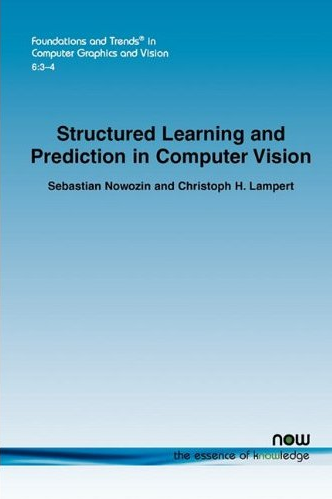Tutorial
This page contains information and materials related to the CVPR 2011 tutorial on "Structured Prediction and Learning in Computer Vision".
Abstract
Powerful statistical models that can be learned efficiently from large amounts of data are currently revolutionizing computer vision. These models possess rich internal structure reflecting task-specific relations and constraints. This tutorial introduces the reader to the most popular classes of structured prediction models in computer vision. This includes discrete graphical models which we cover in detail together with a description of algorithms for both probabilistic inference and maximum a posteriori (MAP) inference. We discuss separately recently successful techniques for prediction in general structured models. In the second part of this tutorial we describe methods for parameter learning. We distinguish the classic maximum likelihood based methods, such as conditional random fields, from the more recent prediction-based parameter learning methods, such as structured output support vector machines. We highlight recent developments to enrich models such as kernelization and latent variable models. Throughout the tutorial we provide examples of successful application of the methods in the computer vision.
Schedule
The tutorial is held on Saturday, June 25th, 2011 at CVPR 2011.
| 8:30-8:40 | Introduction | |
| 8:40-9:15 | Graphical Models | |
| 9:15-10:00 | Probabilistic Inference in Graphical Models | |
| 10:00-10:30 | Coffee break | -- |
| 10:30-11:15 | Conditional Random Fields | |
| 11:15-12:00 | Structured Support Vector Machines | PDF (updated) |
| 12:00-13:30 | Lunch break | -- |
| 13:30-14:45 | Structured Predition and Energy Minimization | PDF (1/2), PDF (2/2) |
| 15:00-15:05 | Closing Remarks |
Materials

"Structured Prediction and Learning in Computer Vision",
Sebastian Nowozin and Christoph H. Lampert,
Foundations and Trends in Computer Graphics and Vision,
Volume 6, Number 3-4
Contact
- Sebastian Nowozin, Microsoft Research Cambridge, Sebastian.Nowozin@microsoft.com,
- Christoph Lampert, IST Austria, chl@ist.ac.at.